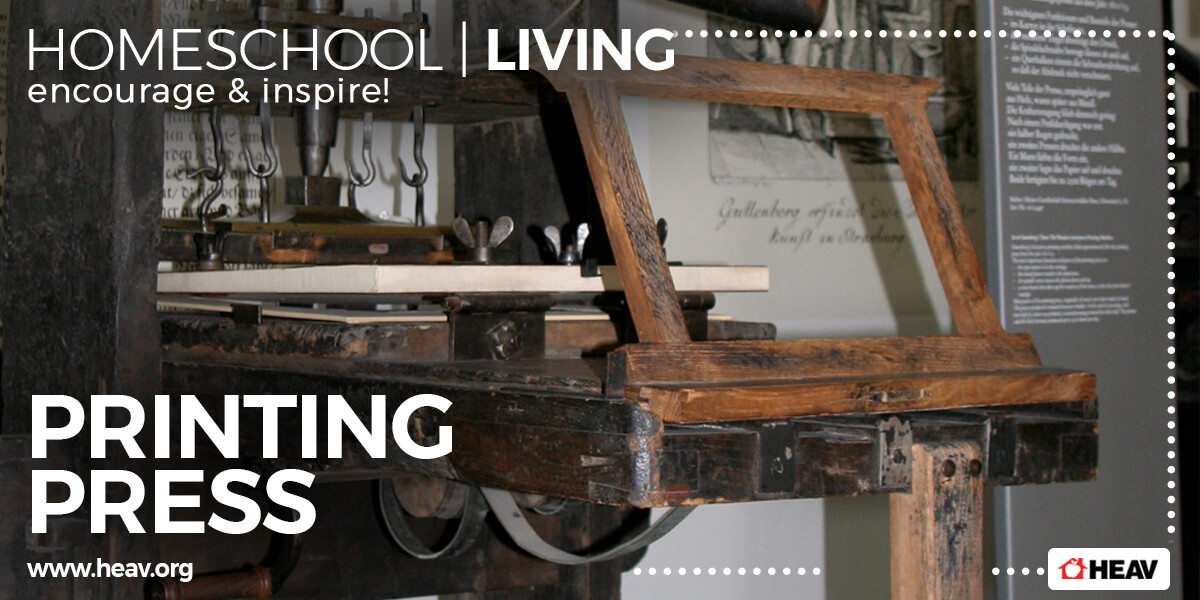Hands-On History: The Printing Press
A study on Johannes Gutenberg’s moveable-type printing press makes an excellent hands-on history lesson with nearly endless activities for students of all ages. You can discuss the impact of moveable-type printing on the accessibility of books and learning materials, practice your own printing techniques with a few simple DIY activities, and even take it further with studies on other inventors and innovations throughout history.
Hands-On History DIY Activities
Some of the best learning happens through hands-on activities that make connections to the topic of study and help solidify facts and events in the child’s mind. What better hands-on activity is there for this lesson than experimenting with your own DIY “printing press”? If you have a panini press or other griddle with a floating hinge collecting dust in your kitchen cabinet, bring it out to make this simple hands-on history DIY. (If you don’t have a press like this available, you can still use a rolling pin and two wooden plates to demonstrate the basic principle.)
To contrast the laboriousness of handwritten volumes and the much faster printing methods, have students write out a few lines of text several times by hand (or draw a simple shape or picture several times). Then, use your printing press to stamp the same text or designs. You could have students time both methods and discuss how books would have become more accessible after printing was available. You can use purchased rubber stamps with a quote or simple picture or shape, or create your own stamps very inexpensively with craft foam and a ballpoint pen.
For older students, you could further contrast block printing with moveable type by using your DIY foam stamps to create “blocks” by carving out a few lines of text on a sheet of foam, and moveable type by cutting out small squares to carve letters into and fixing them to a foam plate with double sided tape or adhesive putty.
Check out this kid-friendly biography of Johannes Gutenberg for some interesting facts about the inventor.
This video shows a fairly detailed demonstration of the use of a replica of Gutenberg’s printing press. (Ignore the closed-captioning – whoever did it didn’t quite understand the technical terms the historical interpreter was using.) Older students especially will be able to identify components of the press and compare it to your simpler DIY version.
Consider expanding your study to include a variety of inventors and inventions! Check out this Homeschool Living for more creative hands-on activities and to explore the benefits of encouraging creativity, innovative thinking, and free play in your homeschool.









